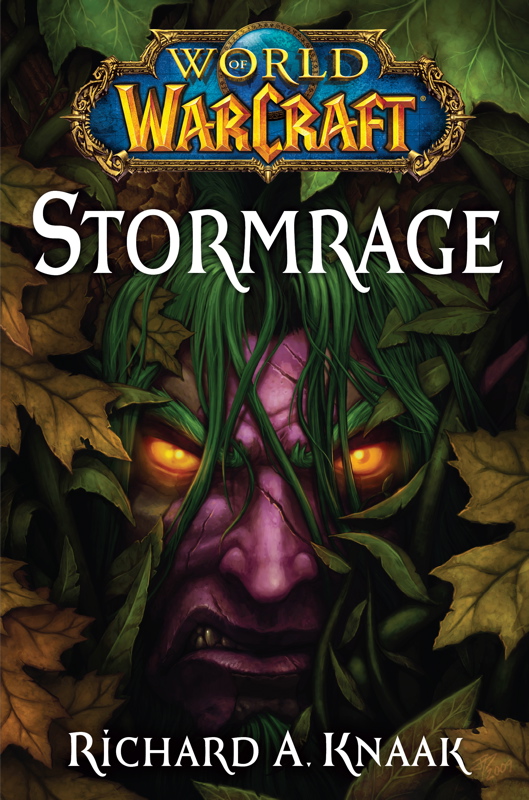I strongly recommend that you read my other review on Knaak’s book Stormrage before reading this one, as I use it as a reference point multiple times.
Mild spoilers for Wolfheart by Richard A. Knaak below! If you want to approach this book with no preconceptions, avoid this blog post.

As may be apparent by the timing of this review, I’ve taken to reading the World of Warcraft novels in chronological order, and after reading Stormrage I moved on to Christie Golden’s The Shattering, which takes place shortly after the events of Stormrage. However, I didn’t write a book review for The Shattering as I didn’t feel like I had much to say about it. As usual, Christie Golden delivered an enjoyable reading experience which, whilst not surpassing the masterpiece of Arthas: Rise of the Lich King or War Crimes, was still a wholeheartedly wonderful novel.
I was less apprehensive when I then started Wolfheart than I was with Stormrage, though I’ll admit I didn’t expect the former to trump The Shattering. But in my opinion, it did, and it definitely surpassed Stormrage and avoided most of the issues I had with that book.
Getting right into it, Wolfheart is set not so long after the events of Stormrage (during the events of the World of Warcraft expansion Cataclysm), and features many of the same characters, albeit under somewhat different circumstances. Not to give too much away, war has now officially broken out between the Alliance and the Horde, both of whom are still reeling after the cataclysm wrought by the mad black dragon Deathwing, leaving much of the world in a state of peril. The repercussions of such an event heightened the need for resources and opened new opportunities for taking territories, and has such led to the re-ignition of old rivalries.
This novel focuses mostly on the Alliance side of matters, with a few different sub-plots. In the city of Darnassus, the recently forgiven Highborn night elves who have been welcomed back into night elven society are being murdered, in a series of attacks which threaten to destabilise the summit called to debate the introduction of the Worgen into the Alliance. This in itself is a separate plot point, one which focuses on human King Varian Wrynn, who is trying to come to grips with the two halves of himself warring within. And finally, the war for Ashenvale, which is told mostly through the eyes of Haldrissa, also plays a key role in the novel.
The concept of a World of Warcraft murder mystery written by Knaak was probably the least appealing plot line to me before I started the novel, largely because as a WoW player I already knew the answer to the whodunit riddle. Despite this, though, Knaak delivered a fully intriguing narrative that not only keeps the reader guessing, but also does a superb job of introducing the Highborne and the still largely unwelcome Worgen into the overall narrative, as well as introducing Jarod Shadowsong as a very well likeable character.
Whilst I was originally not all that fussed with him, it was after reading War Crimes (set after the events of Mists of Pandaria, roughly two years ahead of this novel) that I became a huge fan of the character of Varian Wrynn, a thoroughly complex character who goes through a myriad of character development over the years and truly shines in the latest expansion. (May I direct you to this trailer? Spoilers in the comments.) The events of Wolfheart depicted a massive turning point for his character, and it was not one that Knaak took lightly. This was a shining gem of the novel to me, and for that I commend him.
The war for Ashenvale took a while to warm up, for me, which is admittedly a criticism I had with the previous novel Stormrage. But it was a slow burn, and it truly paid off from the middle to the climax of the novel. One thing that I discovered in Wolfheart was Knaak’s ability to write a clearly understandable and enjoyable battleground, with sound tactical decisions and believable hindrances. Tying into this, Knaak is a master of the fight scene, with numerous skirmishes being described in crystal detail, and one particular fight in Darnassus during the novel’s climax that I hold above all other fight scenes in writing. Perhaps this is more of a comment on my ability to imagine than it is on writing, but I find it a rare occurrence that I am able to completely visualise every move and blow of a fight and how it leads into the next. As invested as I was in this point of my reading session, it felt more like I was watching a Monty Oum animated fight scene that reading a book.
I may have evaluated the different plot lines separately in this review, but do not for a moment believe that this is a fractured narrative. These plot lines often meet and diverge, influencing each other, and by the end of the story they’ve converged into a most natural coalescence. The only issue I have with this novel is that the actions of one of the character’s doesn’t line up with how they are betrayed in the wider World of Warcraft story later on, but I firmly believe that Knaak is not to blame for this. This novel has kindled my faith in him as a writer and I look forward to reading his other works.
